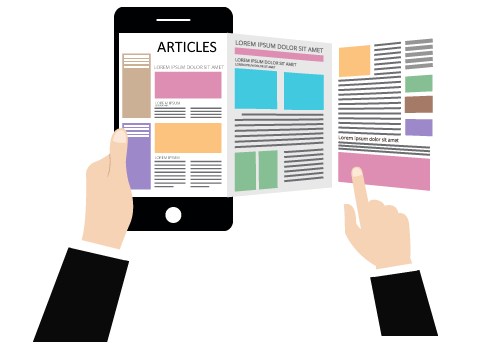By Mark Yacano, Senior Consultant, Unbiased Consulting
Overview – The legal community spends enormous amounts of time discussing contract management systems (“CMS”). With the flood of entrants into the market and the rush to incorporate Generative AI into the mix, potential buyers often direct most of their focus on the functionality of the products and not enough time on the emotional readiness of their organization to embrace new ways of working.
The CMS a legal department selects is often the least important part of the equation because there are, and will continue to be, many functional overlaps between products. The most important part of the equation is understanding the organization’s DNA and the capacity of its employees to adopt change. The outcome of a contract management project depends less on the system selected and more on HOW it was selected, implemented, and rolled out because the level of engagement from constituents outside the legal department often determines success.
Building a coalition that will support and embrace a new CMS and the changes in process, procedure, and workflow that come with it requires a thoughtful and inclusive approach.
The Premise – Legal team leaders sponsoring a CMS selection project face many of the same challenges that presidential candidates face. They must build a coalition of support across the organization to promote the project, invest time, and deliver the right messages. In other words, they must win over the right mix of stakeholder groups to get enough electoral votes to purchase a system. They must then create a strong transition plan to stand the system up (implementation) and provide a high level of constituent care to foster user adoption and the patience needed for an always imperfect system rollout (go-live). Each project stage presents an opportunity to build support and cultivate a passion for change. However, it requires a carefully constructed strategy to capitalize on them.
Multiple Constituent Needs – In a presidential campaign, a successful candidate recognizes that each of the states has their priorities, and even within a state, different regions might have conflicting goals. The candidate must find a pathway to win the necessary electoral votes in an often-fractured electorate.
When a General Counsel or a Legal Operations Leader launches a CMS project, they must make a myriad of strategic decisions about who to include in the project, when to include them, and what coalition of supporters is needed to optimize the chances for a successful outcome. They will never have unanimous support for the project, rarely reach unanimous consensus on the most important use cases, and the rollout will almost assuredly be bumpy. Finding the right coalition of supporters (analogous to electoral votes) is critical because, over time, they can shape a positive narrative that will benefit the entire enterprise.
The Electoral Map – The composition of your CMS electoral map will vary depending on your business and corporate structure. That map can include, but is not limited to, the following business and functional groups (our proxies for states):
- The Legal Department
- Sales or Business Development
- Real Estate Development
- Corporate Finance
- Project Finance
- Risk Management
- Compliance
- IT
- Procurement
- Corporate Operations
- Business Operations
Each stakeholder group will have its priorities, pain points, and thoughts on what a new CMS and contracting process should encompass. Finding the combination of stakeholders most likely to support the project and own its success is critical and one of the least formulaic elements of a CMS selection and implementation project.

Step One – Pick the Right Campaign Staff
- Determine the core team (potentially including)
- Executive sponsor
- Legal Team Members
- Procurement
- Project Management or Business Enablement
- Determine who to add as the project progresses and when to do so (potentially including)
- Members of functional groups such as finance
- Business unit representatives
Step Two – Through Polling and Research
- Conduct business immersion sessions to understand the business holistically (don’t assume you know)
- Acquire a baseline understanding of the enterprise-wide pain points.
- Demonstrate interest in addressing real problems and intent to factor solving them into the selection process.
- Create a project charter that reflects the consensus of the core team on the project’s scope and focus.
- Create a pre-interview survey of different parts of the business.
- It enables you to understand each group’s issues and needs better.
- It shows the project’s seriousness by customizing approaches for the different constituencies and allowing them to be heard.
- It identifies common issues that will help determine your approach to the electoral map and shape your strategy for developing the best possible coalition for a solid launch to build upon
- It enables you to build standard and customized interview outlines for in-person discussions.
Step Three – A Strong Ground Game
- Interviews hold the same potential value as canvassing.
- You can introduce the project and its goals.
- You can learn about the constituent’s needs.
- You can shape the narrative around change and how behavioral and procedural adaptation can improve the process.
- Every interaction with a constituent is an opportunity to build support for change and identify potential roadblocks because:
- Some constituents will gain more autonomy over how they engage in the contracting process.
- Some constituents must surrender control over parts of the contracting process.
- Almost all constituents will need to change their habits.
- Some will fear the heightened transparency a properly deployed CMS provides.

Step Four – A Comprehensive Transition Plan
- Selection is a starting point.
- Implementation is where the system takes shape.
- Build the right team that understands the work and will be able to explain the value to the different constituent groups.
- The right constituent representatives will advocate for the value of the system and the changes required to make it work.
- Use that information to determine which constituent groups are likely to experience early wins needed to build momentum.
Step Five – A Robust Communications Plan
- Communication should be consistent and calibrated throughout the life of the project.
- Discuss the purpose and process in broad terms at the outset.
- Refine communications as the system begins to take shape and the initial scope of the rollout comes together.
- Educate, Inform, and Socialize over and over again.
- Discuss the support that will be in place when the system goes live (potentially including):
- FAQs
- Town Hall Meetings
- Office Hours
- Over the should support
Step Six- Constituent Care
- Change does not end with go-live.
- Keep channels of communication open
- Survey initial users and other groups as the system is rolled out.
- Adjust processes and work with the vendor on glitches or other issues.
- Use successes to set the stage for the expanded rollout.
Contact Us:
For more information about Unbiased Consulting’s services, please visit our website at www.unbiasedconsulting.com, email us at info@unbiasedconsulting.com, or call us at 312.967.6317 or email the author at myacano@unbaisedconsulting.com.

